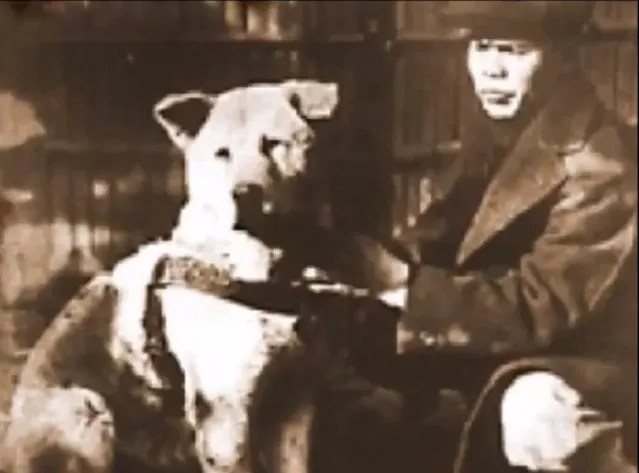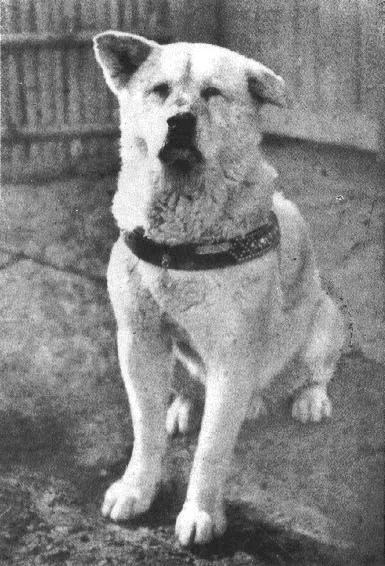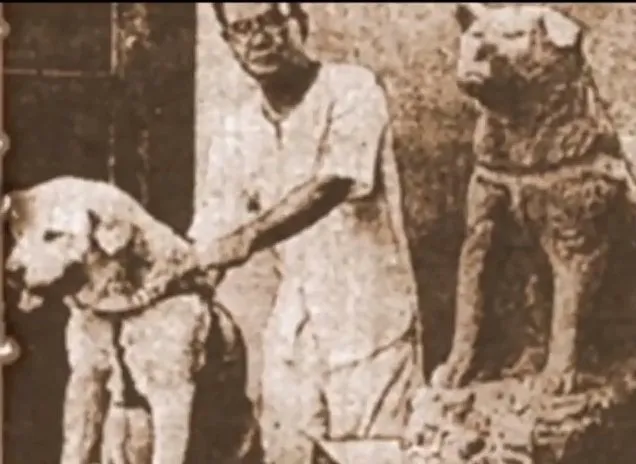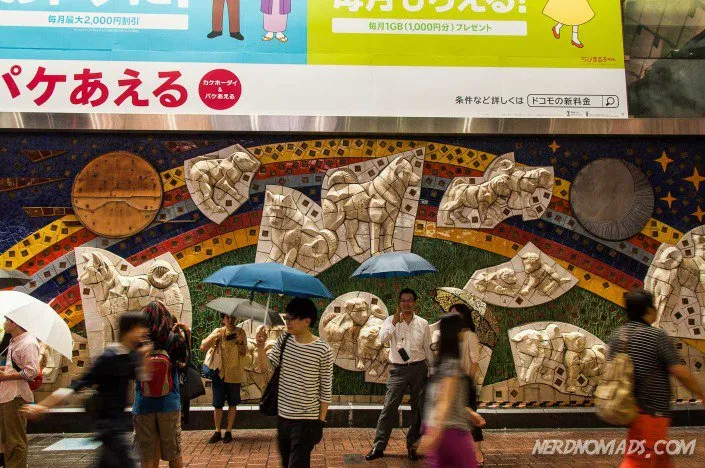The story of Hachiko, the incredibly loyal Akita dog, has captivated hearts across the globe, becoming a timeless testament to unwavering devotion. While many know of his tale through the renowned 2009 Hollywood film “Hachiko: A Dog’s Tale,” the powerful narrative of loyalty and love is a Hachi Movie Based True Story that originated in Japan. This article delves into the remarkable life of Hachiko, exploring the real events that inspired a cinematic masterpiece and cemented his place as a national hero and an international symbol of fidelity. From his humble beginnings to his enduring vigil at Shibuya Station, Hachiko’s journey is a poignant reminder of the profound bond between humans and their canine companions, a bond so strong it transcended even death and continues to resonate through his celebrated film adaptations.
The impact of Hachiko’s real-life story is so profound that it has not only inspired films but also numerous books and memorials. Understanding the actual events provides a deeper appreciation for the movie adaptations, revealing the authenticity of the emotions portrayed on screen. Those interested in more touching canine tales might also enjoy exploring a dog movie true story list to discover other inspiring narratives.
The Unbreakable Bond: Hachiko’s Early Life and Professor Ueno
Hachiko’s story begins in Odate City, Akita prefecture, Japan, where he was born on November 10, 1923. He was a purebred Akita dog, a breed known for its intelligence, strength, and loyalty. Professor Hidesaburō Ueno, a professor of agriculture science at The University of Tokyo, had long yearned for a purebred Akita puppy. One of his students helped him find Hachiko, who was then brought to Tokyo after a strenuous 20-hour train journey. Upon arrival on January 15, 1924, the tiny puppy was in such poor condition that he was initially thought to be dead. However, Professor Ueno and his girlfriend Yae diligently nursed him back to health over the next six months, and Hachiko, affectionately named Hachi (meaning “eight,” a lucky number in Japan), grew into a strong and healthy dog.
Professor Ueno adored Hachi, treating him like a son. Their bond quickly became inseparable. Every morning, Hachi would accompany his beloved owner to Shibuya Train Station, watching him depart for work. In the afternoons, Hachi would return to the station, patiently waiting to greet Professor Ueno on his return journey. This daily ritual became a cherished routine, a testament to the deep affection and connection shared between the professor and his faithful companion. The simplicity of these daily acts underscored the extraordinary relationship that would soon become legendary, captivating the world and laying the groundwork for the future hachi movie based true story.
 Hachiko and his best friend and owner, Professor Ueno
Hachiko and his best friend and owner, Professor Ueno
A Decade of Devotion: Hachiko’s Wait at Shibuya Station
The heartwarming daily routine of Hachiko and Professor Ueno tragically ended on May 21, 1925. On this fateful day, Hachi, as usual, sat by the exit at Shibuya Station, eagerly awaiting his master’s return. But Professor Ueno never appeared. Unbeknownst to Hachiko, his owner had suffered a cerebral hemorrhage while at work and passed away suddenly at the age of 53. Hachi had only been with Professor Ueno for one year and four months when this devastating event occurred. Following Professor Ueno’s death, Hachi was sent to live with Kozaburo Kobayashi, a former gardener for the Ueno family, whose home was conveniently close to Shibuya Station.
Despite his new living arrangement, Hachiko’s loyalty never wavered. For the remainder of his life, which spanned another ten years, he continued his daily pilgrimage to Shibuya Train Station. Every afternoon, precisely when his beloved owner’s train was due, Hachi would appear, waiting for hours in vain. Professor Mayumi Itoh, Hachiko’s biographer, noted, “In the evening, Hachi stood on four legs at the ticket gate and looked at each passenger as if he were looking for someone.” Initially, Hachiko faced harsh treatment from some pedestrians and station staff, who would occasionally beat or bully him. However, his steadfast devotion eventually caught the attention of a reporter from a major Japanese newspaper.
 Hachiko was a purebred Akita dog waiting at Shibuya Station
Hachiko was a purebred Akita dog waiting at Shibuya Station
In 1932, the newspaper published Hachi’s story, transforming him into a national celebrity. People began to call him “Chuken-Hachiko,” meaning “Hachiko – the faithful dog.” His story of unwavering loyalty resonated deeply with the Japanese public and beyond, inspiring people from all corners of the world to visit him at Shibuya Station, offering treats and showing their admiration. Hachiko’s daily vigil continued for an astonishing nine years, nine months, and 15 days, until his own passing on March 8, 1935, at the age of 11. His unwavering dedication solidified his status as a powerful symbol of love, devotion, and loyalty, laying the foundation for the captivating hachi movie based true story that would touch millions.
Hachiko’s Cinematic Journey: The True Story on Screen
Hachiko’s powerful narrative of loyalty and enduring love naturally lent itself to cinematic adaptations, bringing his remarkable true story to a global audience. The first film about Hachiko, titled “Hachiko Monogatari,” was made in Japan in 1987. This original Japanese production faithfully recounted the events of Hachiko’s life and his steadfast devotion, deeply moving audiences in his homeland. The movie further cemented Hachiko’s legendary status within Japan and introduced his tale to a wider Asian audience.
However, it was the 2009 Hollywood remake, “Hachiko: A Dog’s Tale,” starring Richard Gere, that truly brought the hachi movie based true story to international prominence. This American adaptation, filmed in Rhode Island, USA, reimagined the setting from Shibuya, Japan, to a small American town, making the story accessible and relatable to Western audiences while retaining the core emotional impact of Hachiko’s loyalty. The film was a critical and commercial success, famously known for its heart-wrenching depiction of Hachiko’s unwavering wait and his bond with Professor Parker Wilson (the character based on Professor Ueno). The movie’s popularity led to the erection of a replica Hachiko statue in Woonsocket Depot Square, Rhode Island, at the fictional “Bedridge” train station featured in the film, honoring both the true story and its cinematic portrayal. The success of this film undoubtedly added to the global recognition of Hachiko and his incredible tale, making his name synonymous with canine fidelity. For more narratives that highlight the unique connection between humans and dogs, consider checking out this dog movie true story list.
Honoring a Legend: Hachiko’s Statues and Memorials
Hachiko’s profound legacy is commemorated through various statues and monuments across Japan, serving as enduring tributes to his unwavering loyalty. These memorials allow both locals and international visitors to connect with his story and reflect on the powerful bond he shared with his owner.
1. Hachiko Statue – Shibuya Station
The most iconic and frequently visited Hachiko statue stands proudly in front of Shibuya Station in central Tokyo. Erected in 1934 by Japanese artist Teru Andō, the original statue was unveiled in a grand ceremony, with Hachiko himself present as the guest of honor. Sadly, this original statue was melted down for metal during World War II. The current bronze statue, a beloved landmark, was created in 1948 by Takeshi Ando, the son of the original artist. Today, it remains one of Tokyo’s biggest tourist attractions and a popular meeting point, especially among young Japanese. The station entrance leading to the statue is even named “Hachikō-guchi,” meaning “The Hachikō Entrance/Exit,” a direct nod to his enduring presence.
 Hachiko in front of his statue at Shibuya Station
Hachiko in front of his statue at Shibuya Station
Hachiko Annual Memorial Ceremony – March 8
Every year, on March 8, the anniversary of Hachiko’s death, a memorial ceremony is held at Shibuya Station. This event honors Hachi and celebrates the virtues of love and loyalty that he embodies. The 2023 ceremony was particularly significant, marking what would have been Hachiko’s 100th birthday, drawing a large crowd of admirers and enthusiasts.
2. Hachiko Mosaic – Shibuya Station
On a wall within Shibuya Station, a beautiful mosaic mural titled “Hachiko Family” depicts Hachiko happily playing with his parents and siblings. Created by Japanese artist Ryutaro Kitahara and completed in March 1990, this artwork offers a vibrant and heartwarming portrayal of Hachiko’s origins. A poetic inscription accompanying the mural reflects on the station as a place of greetings and farewells, joy and sadness, inviting people to meet in front of the “Hachiko Family” mural.
 Beautiful mosaic artwork of Hachiko with his family at Shibuya Train Station, Tokyo
Beautiful mosaic artwork of Hachiko with his family at Shibuya Train Station, Tokyo
3. Stuffed Hachiko – National Museum of Nature and Science, Tokyo
After Hachiko passed away peacefully on the street near Shibuya Station on March 8, 1935, his body was preserved due to his immense symbolic importance. Today, visitors can see the actual stuffed Hachiko at the National Museum of Nature and Science in Ueno, Tokyo. This exhibit provides a tangible connection to the legendary dog, allowing people to stand in the presence of the faithful Akita.
 Stuffed Hachiko is now at the National Science Museum in Ueno, Tokyo
Stuffed Hachiko is now at the National Science Museum in Ueno, Tokyo
4. Hachiko & Professor Ueno Statue – University of Tokyo
At the University of Tokyo, where Professor Ueno worked, a particularly poignant bronze statue depicts Hachiko joyfully reuniting with his best friend and owner. Erected on March 9, 2015, marking the 80th anniversary of Hachiko’s death, this statue by Japanese artist Tsutomo Ueda portrays Hachiko jumping up to greet Hidesaburō at the end of a workday. This peaceful monument, located under a large tree with a nearby bench, offers a serene spot for reflection on loyalty, love, and devotion, without the crowds often found at Shibuya. Adjacent to the statue is a small museum featuring articles, photos, Hachiko’s autopsy report, and some of his preserved internal organs, revealing that he died of terminal cancer and a filaria infection, though four yakitori skewers were also found in his stomach without causing harm.
5. Hachiko Monument – Professor Ueno’s Grave
While Hachiko’s fur was preserved for the museum, his remains were cremated. His ashes were then buried alongside his beloved owner, Professor Ueno, in Aoyama Cemetery in Minato, Tokyo. A monument dedicated to Hachiko stands beside Professor Ueno’s tomb, providing a final, touching resting place where the loyal dog could be eternally reunited with his master. This location is a deeply moving spot for those who appreciate the complete hachi movie based true story and its powerful conclusion.
The Akita Dog Museum: A Tribute to Hachiko’s Breed
In Odate City, within the Akita prefecture of Japan, stands the Akita Hachiko Dog Museum, a dedicated institution honoring the world’s most famous Akita dog. This museum is an essential visit for any animal lover or admirer of Hachiko’s story. Here, visitors can immerse themselves in the history and characteristics of the Akita breed, with a special focus on Hachiko’s life and legacy. On weekdays, the museum even offers the unique opportunity to meet and interact with two charming Akita dogs, making the experience even more engaging and memorable.
Odate City, recognized as the “capital city” of the Akita dog breed, is filled with various Akita dog statues and symbols. You can find a Hachiko statue in front of Odate Station, a Hachiko Shrine on the train platform, and Akita dog figures adorning postboxes at City Hall. Even the city’s manhole covers feature Hachiko-related cartoon characters, showcasing the pervasive affection for the breed and its most famous representative. The museum operates from mid-April to mid-November, between 9:00 AM and 4:00 PM. For those deeply moved by the hachi movie based true story, a visit to this museum offers an unparalleled insight into the breed and the culture that cherishes Hachiko.
Conclusion: An Unforgettable Tale of Loyalty
The true story of Hachiko is far more than just a historical anecdote; it is a profound testament to the extraordinary capacity for love and loyalty found within the animal kingdom. His decade-long vigil at Shibuya Station, faithfully awaiting a master who would never return, transformed him from a simple dog into an enduring international symbol of devotion. The captivating hachi movie based true story, particularly the 2009 Hollywood adaptation, played a pivotal role in bringing this heartwarming and heartbreaking tale to millions around the globe, solidifying Hachiko’s place in popular culture.
From the various statues that grace Tokyo and beyond, to the dedicated Akita Dog Museum, Hachiko’s legacy continues to inspire and touch hearts. His story reminds us of the deep, unbreakable bonds we share with our pets and the timeless virtues of faithfulness and patience. Hachiko’s unwavering spirit transcends language and culture, proving that a dog’s love truly knows no bounds. His story encourages us to appreciate the loyalty of our own companions and serves as a poignant reminder that dogs are indeed, man’s best friend. Discover more powerful stories of canine companionship by exploring a dog movie true story list.
